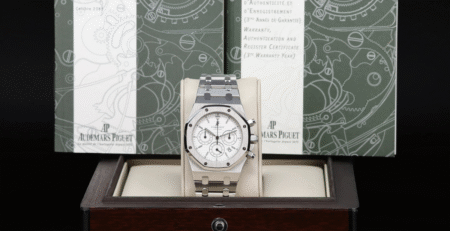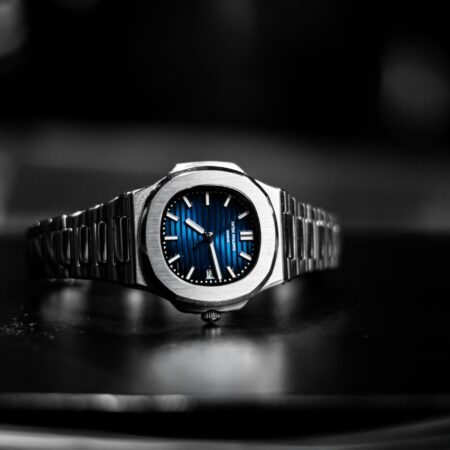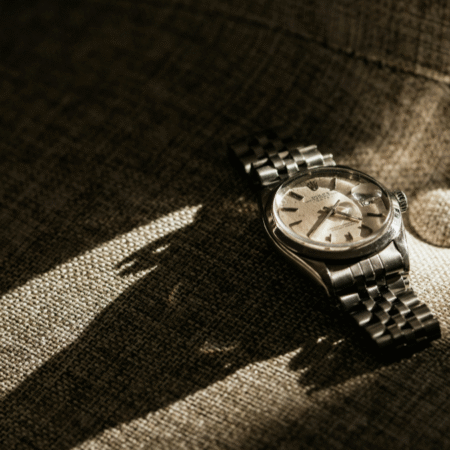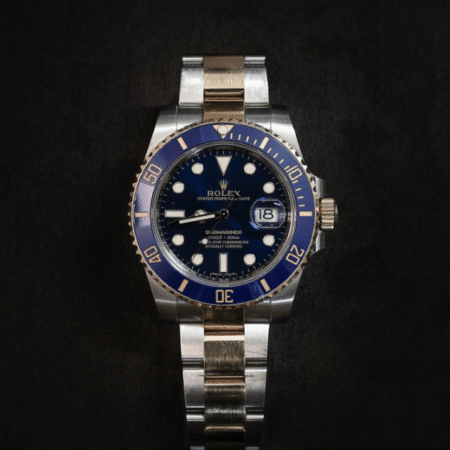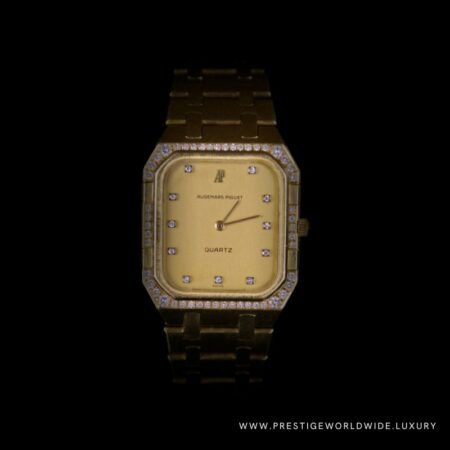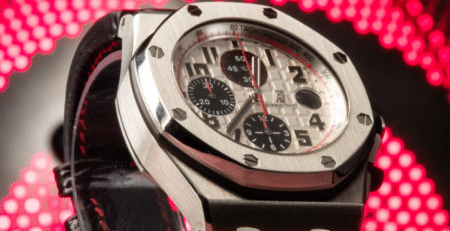The North American watch market in 2025 tells a complex story. Following a 2.8% decline in 2024, the market showed signs of stabilization with Q1 2025 posting just a 0.4% quarter-over-quarter drop, yet certain segments show remarkable resilience. Blue-chip brands like Rolex, Patek Philippe, and Audemars Piguet maintain their liquidity advantages, while independent manufacturers like F.P. Journe have appreciated 50-60% since 2019 on entry-level models.
This divergence highlights a crucial reality: not all watches are created equal when it comes to investment potential.
Understanding the Spectrum
Before diving into strategy, it’s essential to understand where different watches fall on the heirloom-to-investment spectrum:
Pure Heirloom Pieces (Emotional Value Priority)
Primary Goal: Multigenerational continuity and storytelling
Typical Examples: Birth-year pieces, commemorative models, engraved watches
Holding Period: 20+ years or perpetuity
Decision Criteria: Emotional resonance, family heritage
Investment-Focused Pieces (Financial Return Priority)
Primary Goal: Capital appreciation and liquidity
Typical Examples: Steel sports models, scarce independents
Holding Period: 3-10 years
Decision Criteria: ROI potential, market volatility, exit liquidity
Dual-Purpose Watches (The Sweet Spot)
Primary Goal: Both emotional and financial value
Typical Examples: Limited editions of iconic models
Holding Period: 5-15 years
Decision Criteria: Provenance combined with market performance
The Emotional Dimension: Building Legacy
The heirloom aspect of watch collecting goes far beyond the monetary. These pieces become vessels for family stories, markers of significant life moments, and tangible connections between generations.
Creating Meaningful Narratives
Smart collectors align their heirloom choices with family themes. An aerospace engineer might choose an Omega Speedmaster for its moon landing heritage. A family with nautical roots might gravitate toward a Blancpain Fifty Fathoms. These connections create stories that appreciate emotionally over time, often becoming more valuable than any financial return.
Documentation and Provenance
Building heirloom value requires intentional documentation:
Maintain digital ledgers with purchase receipts and service history
Include family photos showing the watch at significant moments
Create written or video messages explaining the watch’s significance
Store backup documentation in cloud services and physical copies
Why Your Next Watch Could Beat the Stock Market
For those approaching watches as investments, 2025 presents both challenges and opportunities. Recent data reveals interesting trends across different segments:
Blue-Chip Performance (2024-2025):
Rolex: +0.4% (Q1 2025, showing market stabilization)
Patek Philippe: +0.7% (steel sports models significantly outperforming complications)
Audemars Piguet: -0.3% (gradual recovery from oversupply issues)
Independent Manufacturers:
F.P. Journe entry models: +50% since 2019
MB&F Limited Models: 15% above 2023 highs
Limited production runs (900-1,000 pieces annually) drive scarcity premiums
Mid-Tier Heritage Brands:
Omega: +1.7% in recent months
Breitling: -2% year-over-year
Represent lower-volatility “stability sleeves”
Liquidity Considerations
Understanding how quickly you can exit a position is crucial for investment planning:
Rolex: Average 12 days to sell (highest liquidity)
Patek Philippe/AP: 21-22 days average
Omega/Breitling: 25-30 days
Independent Brands: 45+ days (varies significantly by model)
Understanding Collector Terms
Before diving deeper, let’s clarify some key concepts:
Liquidity: How quickly you can sell a watch without significantly impacting its price
Provenance: The watch’s ownership history and documentation trail
Alpha Generation: Earning returns above the market average through smart selection
Blue-Chip: Established, prestigious brands with proven track records
Scarcity Premium: Extra value created by limited availability
How Tariff Wars Are Creating Unexpected Opportunities
Tariff Impact
The looming 31% tariff on Swiss imports (currently deferred with 10% interim duties) has already begun affecting the market. This regulatory uncertainty has:
Triggered front-loading of 2025 supply
Distorted spot pricing as dealers adjust inventory
Created arbitrage opportunities for savvy collectors
Time-Sensitive Opportunity: With final tariff decisions expected by August 2025, collectors have a narrow window to secure Swiss pieces at current pricing. Post-tariff, expect retail prices to increase 10-15% across major brands.
Tax Implications
Understanding the tax landscape is crucial for investment-focused collecting:
Capital Gains: Watches are taxed as collectibles at ordinary rates up to 28%
Estate Tax: 2025 exclusion of $13.99M per individual (scheduled to sunset in 2026)
Strategy: Hold positions longer than 12 months when possible for favorable treatment
The 40/30/30 Portfolio Strategy
The most successful collectors today employ a balanced approach that I call the 40/30/30 rule. While not yet an industry standard, this framework is gaining traction among alternative asset investors and provides a practical structure for balancing passion with profit:
40% Heirloom Focus
Objective: Sentiment and lineage preservation
Examples:
- Omega Speedmaster Moonwatch ($6,800)
- Cartier Tank Must ($3,700)
Strategy: Choose pieces with engraving potential and family significance
30% Anchor Investments
Objective: Long-term capital preservation
Examples:
Rolex Submariner 126610LN ($12,700)
Patek Philippe Aquanaut 5167A ($68,000)
Strategy: Focus on blue-chip icons with proven track records
30% Opportunistic Plays
Objective: Alpha generation and market learning
Examples:
F.P. Journe Chronomètre Bleu ($78,000)
MB&F Legacy Machine 101 ($79,000)
Strategy: Target scarce independents and limited editions with upside potential
Risk Management and Portfolio Protection
Insurance and Protection
Dedicated watch insurance through providers like Jewelers Mutual costs 1-2% of insured value annually but provides coverage that homeowners’ policies often exclude:
Mysterious disappearance coverage
Worldwide travel protection
No deductible options
Agreed-value policies
Maintenance and Documentation
Proper care preserves both emotional and financial value:
Follow manufacturer service intervals (typically every 5-7 years)
Maintain detailed condition records using standardized grading
Photograph pieces annually, including macro dial details and lume shots
Store documentation both digitally and in hard copy
Market Predictions
Several trends will likely shape the collecting landscape:
Short-term (2025-2026):
Continued tariff uncertainty affecting Swiss import pricing
Potential estate tax law changes create urgency for wealth transfer
Market stabilization as sellers adjust to the new pricing reality
Medium-term (2026-2030):
Increased importance of independent manufacturers
Growing emphasis on sustainable and ethical production
Digital authentication and blockchain provenance tracking
The Bottom Line
The modern watch collector doesn’t need to decide between passion and profit. The most successful approach combines emotional intelligence with market awareness, creating a collection that serves both the heart and the portfolio.
By consciously allocating across heirloom, anchor, and opportunistic categories, collectors can build legacies that appreciate in multiple dimensions. The key is being intentional about each purchase, understanding its role in your broader strategy, and maintaining the flexibility to adapt as markets and life circumstances evolve.
The best watch collection is one that brings joy in the wearing, pride in the owning, and value in the passing down. When you achieve that balance, you’ve mastered the art of modern collecting.
Whether you’re buying your first serious piece or refining a mature collection, let both your wrist and your wisdom guide the way. After all, the most valuable timepieces are those that mark not just hours and minutes, but the moments that matter most.


